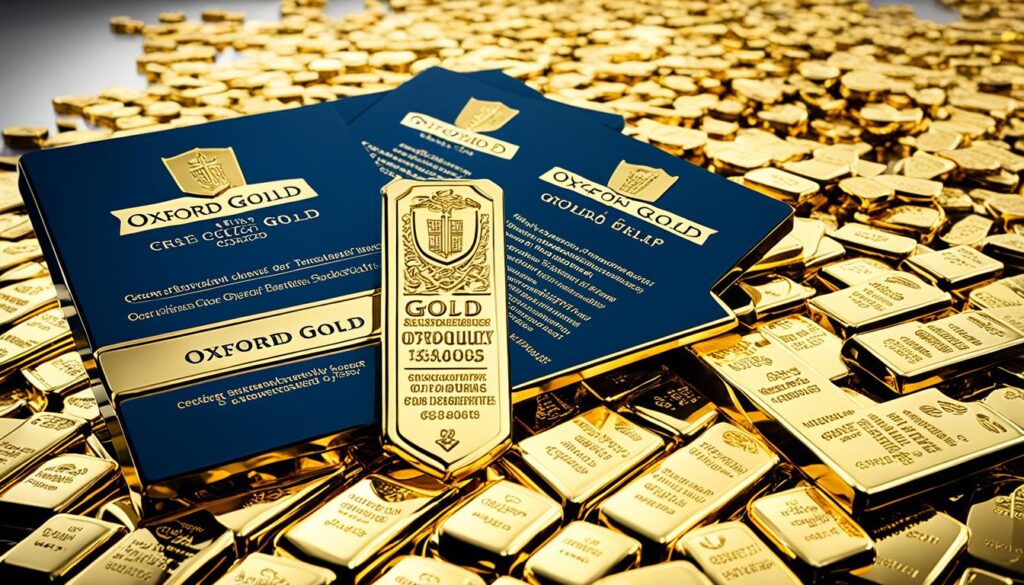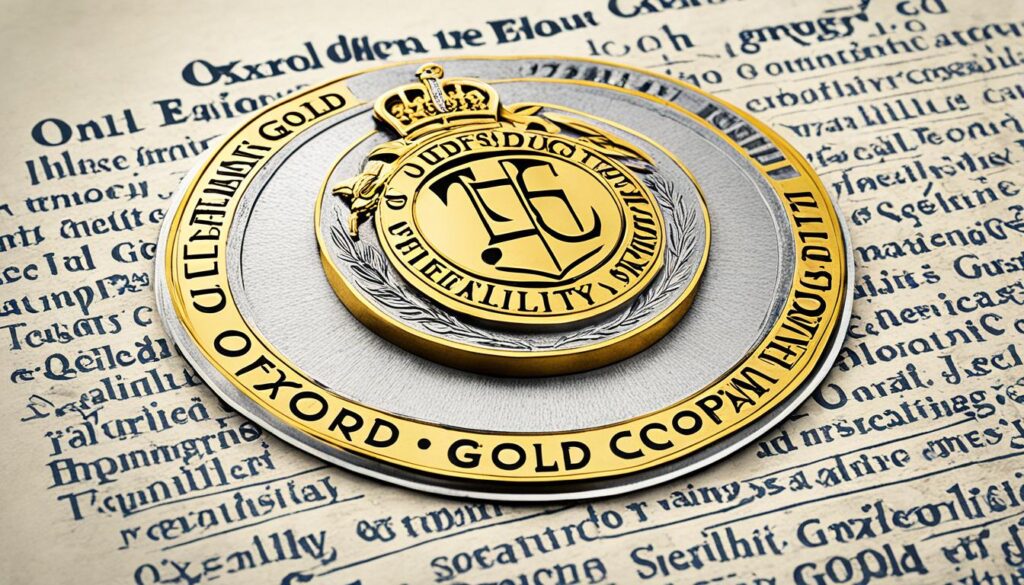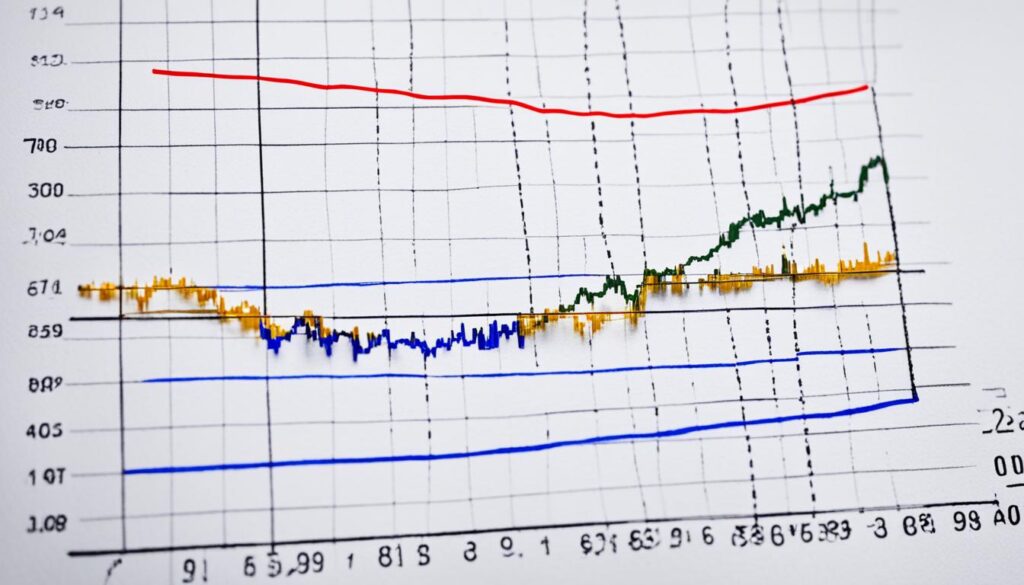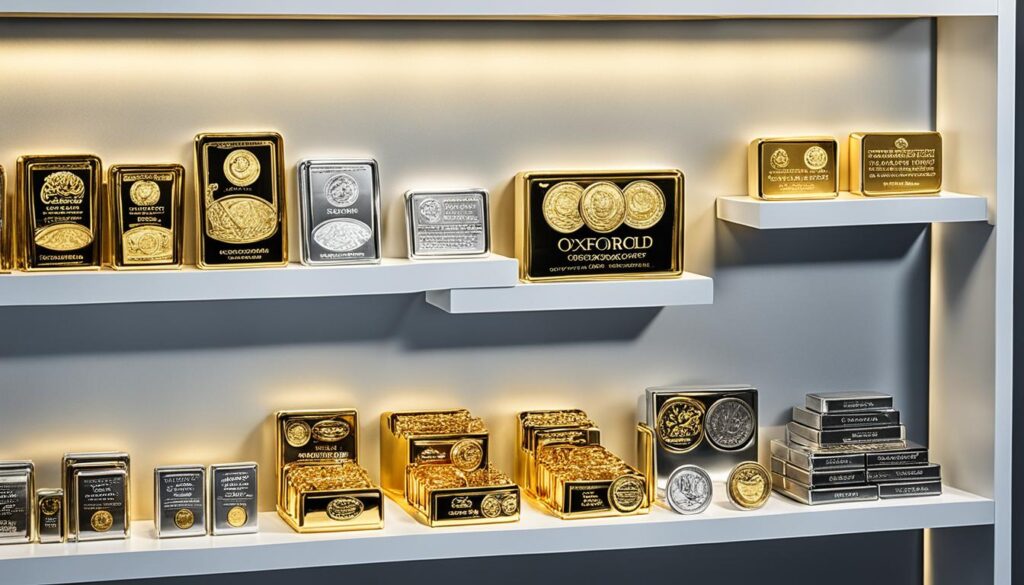Gold IRA
A Beginner's Guide to Precious Metals Investing
Wondering how to secure your finances? Discover the benefits of investing in precious metals for stability and growth.

Investing in precious metals such as gold, silver, platinum, and palladium provides diversification and stability for your portfolio. These metals offer a hedge against inflation, market turbulence, and economic uncertainty. You can invest through physical ownership, derivatives markets, or metal ETFs. However, consider risks like market volatility and storage challenges. Comparing with stocks, precious metals offer stability while stocks provide dividends. Crafting a balanced portfolio involves strategic allocation and regular monitoring. Understanding these basics sets a strong foundation for successful precious metals investing, guiding you towards financial security and growth.
Key Takeaways
- Consider physical metal ownership, ETFs, or derivatives for investment diversity.
- Evaluate risks like market volatility, storage, and counterparty risks.
- Research thoroughly or consult with financial advisors for informed decisions.
- Monitor metal prices and market trends regularly for adjustments.
- Balance portfolio with stocks for growth potential and risk diversification.
Types of Precious Metals

Precious metals, such as gold, silver, platinum, and palladium, hold significant value and diverse industrial applications, making them sought-after investment options for individuals looking to diversify their portfolios.
Gold, with its durability and conductivity, is widely used in currency, jewelry, electronics, and dentistry.
Silver, more affordable for beginner investors, finds applications in electrical appliances, medicinal uses, batteries, and circuits, making it versatile in various industries.
Platinum, rarer than gold, serves in automotive catalytic converters, the computer industry, and chemical refining.
Palladium, on the other hand, is essential in engines, ceramic capacitors, and is often alloyed with gold for white gold jewelry.
These precious metals offer not only investment opportunities but also play important roles in industrial processes and everyday items, showcasing their enduring value beyond financial markets.
For those interested in the allure of jewelry or the stability of investing, understanding the industrial uses of these metals can guide decisions in building diverse and resilient portfolios.
Benefits of Investing

Investing in precious metals offers significant benefits such as potential growth and portfolio diversification. These assets serve as a reliable hedge against inflation and economic uncertainties, providing stability during market fluctuations.
Growth Potential
With a track record of providing stability during economic turbulence, precious metals present investors with a compelling avenue for capital growth and wealth preservation.
Investing in precious metals, such as gold bullion, can offer a hedge against inflation and market volatility, safeguarding your portfolio from uncertainties.
Their intrinsic value and low correlation to other assets make them an attractive option for diversification, reducing overall portfolio risk.
Precious metals carry no credit risk and maintain high liquidity, ensuring wealth preservation even in challenging economic conditions.
Historical data shows that gold and silver have retained their financial value well during times of crisis, making them a reliable choice for those seeking long-term growth potential and stability in their investment portfolio.
Portfolio Diversification
Incorporating precious metals into an investment portfolio not only enhances diversification but also offers a reliable strategy for mitigating risk and safeguarding wealth. Precious metals, such as gold, silver, platinum, and palladium, act as a hedge against inflation and economic uncertainties, making them valuable assets in a diversified portfolio. These metals provide stability and security by retaining their value over time, regardless of market fluctuations.
Ways to Invest

When considering investing in precious metals, individuals have multiple options to choose from based on their risk tolerance, investment goals, and market knowledge. Below is a table outlining different ways to invest in precious metals:
| Investment Avenue | Description | Examples |
|---|---|---|
| Physical Metal | Direct ownership of gold, silver, platinum, or palladium in the form of coins or bars | Gold coins, silver bars |
| Derivatives Markets | Involves trading futures contracts or options based on the price of precious metals | Gold futures, silver options |
| Metal ETFs | Exchange-traded funds that track the price of specific precious metals or a basket of metals | SPDR Gold Shares (GLD), iShares Silver Trust (SLV) |
Each investment avenue has its own set of characteristics and risks, therefore, conducting thorough research or consulting with a financial advisor before making any investment decisions is crucial.
Risks to Consider

Investing in precious metals involves risks that stem from market volatility, counterparty evaluation, and the need for storage and insurance.
Price fluctuations driven by various factors can impact the value of the investment, while evaluating the reliability of parties involved is important in mitigating risks.
Additionally, considering the costs associated with storing and insuring precious metals is essential for investors to understand the full scope of potential drawbacks in this type of investment.
Market Volatility Factor
Exploring the intricate landscape of precious metals investing requires a vital awareness of the substantial risk posed by market volatility. When considering this factor, several key points should be taken into account:
- Price Fluctuations: Precious metals prices are highly susceptible to market volatility, leading to rapid changes in value.
- Geopolitical Events: Global political shifts can profoundly impact the prices of precious metals, adding to market volatility.
- Economic Conditions: Fluctuations in the economy, such as inflation or recession, can influence the demand for precious metals and their market prices.
- Investor Sentiment: Market perception and behavior can contribute to increased volatility, affecting the value of precious metals investments.
Understanding these dynamics is essential for effectively managing risks and making informed investment decisions in the precious metals market.
Counterparty Risk Assessment
Counterparty risk evaluation is a fundamental aspect of evaluating the potential vulnerabilities associated with various investment options in the domain of precious metals. When holding physical metals like gold and silver, counterparty risk is minimal as there are no intermediaries involved.
However, investing in derivatives, ETFs, or mining company stocks linked to precious metals can heighten counterparty risk due to the involvement of multiple parties. Physical bullion ownership can help mitigate this risk by providing direct ownership without relying on intermediaries.
Understanding and analyzing counterparty risk is vital for making informed decisions and safeguarding investments in the domain of precious metals. It is important to take these factors into account when delving into the world of precious metals investment to navigate potential vulnerabilities effectively.
Storage and Insurance
Properly safeguarding and insuring the storage of precious metals is crucial to mitigate risks associated with theft, damage, or loss. When considering storage and insurance for your precious metals investments, here are some key points to keep in mind:
- Explore various storage options such as home safes, safety deposit boxes, or private storage facilities.
- Understand that home insurance policies may not provide sufficient coverage, necessitating additional insurance for your precious metals.
- Some precious metals dealers offer storage services with included insurance coverage for added security.
- Conduct regular inventory checks and maintain proper documentation of your stored precious metals to ensure security and facilitate insurance claims processes.
Comparison With Stocks

When considering investment options, understanding the distinctions between stocks, which represent ownership in a company, and precious metals, such as gold and silver, which are physical commodities, is essential. Stocks are influenced by company performance and market conditions, offering potential dividends and capital appreciation.
On the other hand, precious metals like gold and silver are known for their intrinsic value and act as a hedge against inflation. While stock investments can be more volatile and risky, precious metals are often seen as a stable investment option.
Diversifying a portfolio with both stocks and precious metals can help balance risk and potentially enhance returns. Investors looking to mitigate risk may find that adding precious metals to their portfolio can provide stability during economic uncertainties.
Understanding the differences and potential benefits of both asset classes is crucial for creating a well-rounded investment strategy that aligns with individual financial goals.
Building Your Portfolio

Crafting a well-balanced precious metals portfolio involves strategically selecting a mix of gold, silver, platinum, and palladium to diversify holdings effectively. To build a robust portfolio, consider the following:
- Invest in Physical Metals: Acquire tangible assets like coins, bars, and rounds to accumulate wealth physically and hedge against economic uncertainties.
- Explore ETFs and Mining Stocks: Diversify your holdings by including Exchange-Traded Funds (ETFs) and stocks of gold/silver mining companies, offering exposure to different segments of the precious metals market.
- Assess Risk Tolerance: Determine the percentage allocation of precious metals in your portfolio based on your risk tolerance and investment objectives, ensuring a balanced approach to wealth preservation.
- Monitor Market Trends: Stay informed about market dynamics and adjust your precious metals portfolio accordingly to align with your investment strategy and capitalize on emerging opportunities while mitigating risks. Regular monitoring and adjustments are essential to maintaining a successful precious metals investment strategy.
Frequently Asked Questions
What Is the Best Way to Start Investing in Precious Metals?
The best way to start investing in precious metals is by researching reputable dealers for purchasing physical gold or silver bullion in the form of coins or bars. This guarantees you acquire genuine precious metals at fair prices.
Additionally, consider diversifying your portfolio by investing in precious metal ETFs or mining company stocks. Evaluating the option of incorporating precious metals into Individual Retirement Accounts (IRAs) can provide long-term growth potential and further diversification.
What Is the Best Precious Metal to Invest In?
When considering the best precious metal to invest in, factors such as historical performance, market volatility, scarcity, and industrial uses play pivotal roles in decision-making. Gold stands out due to its historical value retention and global recognition.
Silver is favored for its affordability and potential for price appreciation during economic uncertainties.
Platinum, with unique industrial applications, offers diversity.
Palladium's demand in automotive catalysts and electronics creates investment opportunities based on market dynamics.
How Do I Start Collecting Precious Metals?
To start collecting precious metals, begin by researching the various types available, such as gold, silver, platinum, and palladium. Understand their unique properties and industrial applications to make informed investment decisions.
Consider purchasing physical bullion forms like coins, bars, rounds, or ingots. Look for reputable dealers and explore options like mining company stocks, mutual funds, and ETFs for diversification.
Gradually incorporate precious metals into your investment portfolio to secure your financial future and hedge against market volatility.
What Does Warren Buffett Say About Precious Metals?
Warren Buffett holds a skeptical view on precious metals, particularly gold, preferring productive assets like businesses due to their income-generating potential and growth prospects. His investment philosophy revolves around long-term value investing in companies with strong fundamentals.
While his stance differs from precious metals enthusiasts, his successful track record in investing underscores the effectiveness of his approach. Buffett's views emphasize the importance of productive assets for long-term wealth accumulation.
Conclusion
To sum up, investing in precious metals can be a valuable addition to a diversified portfolio.
Just as a skilled sculptor carefully selects the finest marble to craft a masterpiece, investors can choose from a variety of precious metals to build a solid financial foundation.
By understanding the types of metals, benefits, ways to invest, risks involved, and comparing with stocks, individuals can make informed decisions to protect and grow their wealth over time.
Sophia is the analytical powerhouse of The Liberty Portfolio. Her keen analytical skills and meticulous attention to detail help us stay ahead of the curve. Sophia is responsible for researching current trends, data analysis, and regulatory changes that impact retirement planning. Her rigorous analysis underpins our content, providing the depth and accuracy that our users rely on for making critical investment decisions.
Gold IRA
Oxford Gold Group Review: Trusted Analysis
Explore a comprehensive analysis of Oxford Gold Group, an esteemed precious metals firm. Unveil insights and client experiences in this candid review.

Did you know that precious metals have been a reliable form of investment for centuries?
Whether you’re seeking to diversify your portfolio or protect your wealth, investing in precious metals can offer stability and long-term growth potential. But with countless options available in the market, it’s crucial to choose a trusted and reputable partner to guide you through the process.
In this article, we will conduct a comprehensive review of Oxford Gold Group, a leading precious metals investment firm. Through trusted analysis, we will explore their services, leadership, customer reviews, investment process, fees, and more, to help you make an informed decision about your financial future.
Key Takeaways:
- Oxford Gold Group is a reputable precious metals investment firm based in Beverly Hills, California.
- The company focuses on providing high-quality resources and consulting services, making precious metal investing accessible to anyone.
- The founders, Patrick Granfar and Pierre Kim, bring extensive experience and leadership to the company.
- Oxford Gold Group has received high ratings and positive feedback from various platforms, showcasing their commitment to customer satisfaction.
- The company offers a range of products and services, including self-directed precious metals IRAs and a variety of IRA-approved coins and bars.
Leadership: Patrick Granfar and Pierre Kim
Patrick Granfar and Pierre Kim, the founders of Oxford Gold Group, bring a wealth of experience and expertise to the company’s leadership. With their deep knowledge of the precious metals investment industry, they have established Oxford Gold Group as a trusted name in the market.
Granfar and Kim’s commitment to excellence is reflected in their hands-on approach to client service. They prioritize transparency and ensure that clients receive the support they need every step of the way. Whether it’s answering inquiries promptly or addressing concerns efficiently, they are dedicated to providing the best possible experience for their clients.
Under Granfar and Kim’s leadership, Oxford Gold Group has flourished. Their focus on transparency and personalized assistance has set the company apart from its competitors. Clients can trust that they are in capable hands with Granfar and Kim leading the way.
To further emphasize their leadership qualities, Granfar and Kim have built a team of professionals who share their vision and commitment to client satisfaction. Together, they work tirelessly to ensure that Oxford Gold Group remains at the forefront of the industry.
Granfar and Kim’s leadership has been instrumental in guiding the company’s growth and success. Their dedication to transparency, prompt responses, and addressing client concerns sets a high standard within the industry. Oxford Gold Group clients can feel confident knowing that they are in the hands of experienced leaders who prioritize their best interests.
“We believe in building lasting relationships with our clients and providing them with exceptional service. Our goal is to empower individuals to secure their financial future through precious metals investments.” – Patrick Granfar, Co-founder of Oxford Gold Group
“At Oxford Gold Group, transparency and client satisfaction are at the core of everything we do. We are committed to guiding our clients through the investment process and helping them make informed decisions.” – Pierre Kim, Co-founder of Oxford Gold Group
Leadership at a Glance:
| Founder | Role | Experience |
|---|---|---|
| Patrick Granfar | Co-founder and CEO | Extensive knowledge of the precious metals investment industry |
| Pierre Kim | Co-founder and COO | Deep expertise in precious metals and financial services |

Oxford Gold Group Reviews, Ratings & Complaints
Oxford Gold Group has garnered positive reviews and high ratings from satisfied customers across various platforms. The company boasts an A+ rating with the Better Business Bureau, a testament to its commitment to customer satisfaction and service. Additionally, Oxford Gold Group has received commendable ratings on respected consumer review sites such as Consumer Affairs, Trustpilot, Retirement Living, Business Consumer Alliance, and Google Reviews.
These positive reviews highlight the company’s dedication to transparency, promptness, and efficiency. Many customers appreciate the personalized assistance and hand-holding approach offered by Oxford Gold Group, making the investment process smoother and more manageable.
However, it is vital to acknowledge that individual experiences may vary. While the majority of the feedback is positive, a few customers have lodged complaints related to delivery issues. It is essential to consider these isolated incidents in the context of the overall positive reputation of Oxford Gold Group.

Customer Testimonials:
“Oxford Gold Group has been instrumental in helping me diversify my retirement portfolio with precious metals. Their knowledgeable and friendly team guided me through the entire process, ensuring my peace of mind along the way.” – Sarah J.
“I trust Oxford Gold Group to handle my precious metal investments. Their transparent pricing and exceptional customer service make them stand out. I highly recommend them to anyone looking to secure their financial future.” – Robert T.
Comparison of Ratings
| Platform | Average Rating |
|---|---|
| Better Business Bureau | A+ |
| Consumer Affairs | 4.8/5 |
| Trustpilot | 4.7/5 |
| Retirement Living | 4.5/5 |
| Business Consumer Alliance | 4.3/5 |
| Google Reviews | 4.2/5 |
Pros & Cons of Oxford Gold Group
When considering investment options, it’s important to evaluate the pros and cons of each potential opportunity. The Oxford Gold Group, a reputable precious metals investment firm, offers several advantages for investors to consider.
Pros of Investing with Oxford Gold Group
Transparent fees: One of the notable benefits of choosing Oxford Gold Group is their commitment to transparent fees. This ensures that investors have a clear understanding of the costs associated with their precious metals investments.
Two depository options: Oxford Gold Group provides investors with the flexibility of choosing from two reputable depositories for storing their investments. This allows individuals to select the option that best suits their security and accessibility needs.
Wide range of investment options: Another advantage of working with Oxford Gold Group is the wide range of investment options they offer. Investors have the opportunity to diversify their portfolios by purchasing gold, silver, platinum, and palladium coins and bars.
Cons of Investing with Oxford Gold Group
Lack of online purchases and application process: One potential downside of investing with Oxford Gold Group is the lack of online purchasing and application options. This may inconvenience some investors who prefer a fully digital experience.
Minimum balance requirement for most customers: Oxford Gold Group imposes a minimum balance requirement for most customers, which may limit access to their services for some investors.
Varying annual fees: While Oxford Gold Group provides transparent fee information, it’s worth noting that the annual fees charged by the company can vary. This may make their services less affordable for certain individuals.
| Pros | Cons |
|---|---|
| Transparent fees | Lack of online purchases and application process |
| Two depository options | Minimum balance requirement for most customers |
| Wide range of investment options | Varying annual fees |
While the Oxford Gold Group offers attractive benefits such as transparent fees, multiple depository options, and a wide range of investment choices, it’s important to carefully consider the potential downsides. The lack of online purchasing and application options, minimum balance requirements, and varying annual fees may impact investors’ overall experience.

Products and Services
Oxford Gold Group offers a comprehensive range of financial products and services tailored to meet the needs of investors. As a trusted leader in the precious metals investment industry, they specialize in helping individuals set up self-directed precious metals Individual Retirement Accounts (IRAs), providing a wide selection of IRA-approved gold, silver, platinum, and palladium coins and bars.
Investors can choose from a variety of high-quality coins and bars, ensuring flexibility and diversification in their precious metals portfolio. Oxford Gold Group’s extensive selection includes popular coins such as American Eagles, Canadian Maple Leafs, and South African Krugerrands. They also offer rare and collector’s coins for those seeking unique investment opportunities.
For investors looking to acquire physical precious metals, Oxford Gold Group provides an array of options. Whether it’s gold, silver, platinum, or palladium, customers can choose from a range of bullion products, including bars and coins in various sizes and weights.
Besides their self-directed IRAs and physical precious metals, Oxford Gold Group also offers investment options in platinum and palladium. These alternative metals provide investors with additional opportunities for diversification and potential long-term growth.
With a focus on transparency and customer satisfaction, Oxford Gold Group ensures that all their products are carefully selected and meet the highest industry standards. Their commitment to excellence extends to the educational resources and guidance they offer, empowering investors to make well-informed decisions about their financial future.
To illustrate the range of products offered by Oxford Gold Group, the following table highlights a sample of their most popular offerings:
| Product Type | Example |
|---|---|
| Gold Coins | American Gold Eagle |
| Gold Bars | 1 oz PAMP Suisse Gold Bar |
| Silver Coins | Canadian Silver Maple Leaf |
| Silver Bars | 10 oz Silver Bar |
| Platinum Coins | Australian Platinum Platypus |
| Platinum Bars | 1 oz Platinum Bar |
| Palladium Coins | Canadian Palladium Maple Leaf |
| Palladium Bars | 10 oz Palladium Bar |

Investment Process and Fees
When it comes to investing with Oxford Gold Group, the process is straightforward and efficient. To get started, individuals need to contact a representative to discuss their investment goals and preferences. Once the initial consultation is complete, the next step is to fill out the application and provide the necessary identification documents. This ensures compliance with regulatory requirements and helps to protect both the investor and the company. Once the application is submitted, investors can proceed to fund their accounts.
It’s important to note that Oxford Gold Group charges various fees for their services. These fees include an annual maintenance fee, which covers the costs associated with managing and maintaining the investor’s precious metals holdings. Additionally, there is a storage fee for storing the physical precious metals in a secure facility. The storage fee ensures the safety and security of the investor’s assets. Finally, there are commissions for the purchase or sale of precious metals, which compensate Oxford Gold Group for their expertise and services.
While the investment process is well-defined, specific dollar amounts or percentages for the fees are not disclosed on the company’s website. It is advisable for potential investors to contact a representative directly for more detailed information regarding the fees and costs associated with investing with Oxford Gold Group.
Investment Process
The investment process with Oxford Gold Group involves the following steps:
- Contact a representative to discuss investment goals and preferences.
- Fill out the application and submit identification documents.
- Fund the account to proceed with the investment.
Fees
Oxford Gold Group charges the following fees for their services:
- Annual maintenance fee for managing and maintaining precious metals holdings.
- Storage fee for securely storing physical precious metals.
- Commissions for the purchase or sale of precious metals.
For specific details regarding the fees, it is recommended to reach out to a representative for comprehensive information.

Storage and Security
Oxford Gold Group understands the importance of secure storage when it comes to precious metals. To ensure the safety of clients’ investments, the company partners with reputable depositories including Brink’s Global Services and Delaware Depository. These depositories have a proven track record of providing secure and insured storage facilities.
As per IRS regulations, precious metals held within an Individual Retirement Account (IRA) must be stored in approved depositories. This requirement is in place to safeguard the assets and prevent any unauthorized access or mishandling. Keeping precious metals in personal possession is not allowed within an IRA.
By choosing Oxford Gold Group, investors can have peace of mind knowing that their precious metals are stored in highly secure facilities, with comprehensive insurance coverage. This ensures the protection and integrity of their investments.

Trusted Depositories
Oxford Gold Group has carefully selected its depository partners to guarantee the utmost security and professionalism. Brink’s Global Services has a global presence and is renowned for its state-of-the-art storage facilities and robust security measures. Delaware Depository, on the other hand, is an industry leader with a long history of providing secure storage solutions.
Insurance Coverage
In addition to partnering with reputable depositories, Oxford Gold Group ensures that clients’ precious metals are fully insured against theft, loss, or damage. This insurance coverage provides an extra layer of protection, further safeguarding the investment.
Company Overview
Oxford Gold Group is a relatively young company founded in 2017 and based in Beverly Hills, California. The company aims to provide investors with better service and transparent pricing. Specializing in helping investors set up self-directed precious metals IRAs, Oxford Gold Group offers a wide range of IRA-eligible precious metals products.
Services Offered
Oxford Gold Group offers a comprehensive range of services to help investors navigate the world of precious metals investing. Their primary focus is on helping clients set up self-directed precious metals IRAs, allowing individuals to take control of their retirement savings and diversify their portfolios with tangible assets.
Through their expert knowledge and partnerships with industry-leading depositories, Oxford Gold Group assists clients in selecting and acquiring IRA-approved gold, silver, platinum, and palladium coins and bars. They provide guidance on the various investment options available and offer personalized solutions tailored to each client’s unique financial goals and risk tolerance.
Additionally, Oxford Gold Group offers options for direct ownership of physical precious metals, as well as investments in platinum and palladium. Their team of experienced professionals provides ongoing support and education throughout the investment process, ensuring clients have the necessary information to make informed decisions.
Transparency and Credibility
One of the key aspects that sets Oxford Gold Group apart is their commitment to transparency and credibility. The company places a strong emphasis on providing clients with clear, upfront pricing and ensuring they fully understand the fees associated with their investments.
Oxford Gold Group’s dedication to transparency is further exemplified by their affiliations with reputable industry organizations such as the American Numismatic Association and their registration with FINRA, the Financial Industry Regulatory Authority.
With these affiliations and regulatory oversight, investors can have confidence in the credibility and integrity of Oxford Gold Group as a trusted partner in the precious metals investment space.
Client Satisfaction and Testimonials
Oxford Gold Group places a strong emphasis on ensuring client satisfaction. They strive to provide exceptional customer service and support by offering prompt responses to inquiries, personalized attention, and ongoing education to empower clients to make well-informed investment decisions.
The company has received positive feedback and testimonials from satisfied clients who have appreciated Oxford Gold Group’s commitment to transparency, tailored solutions, and reliable service. While individual experiences may vary, the overall sentiment reflects a dedication to providing a positive customer experience.

| Company Highlights | Details |
|---|---|
| Year Founded | 2017 |
| Headquarters | Beverly Hills, California |
| Main Services | Helping investors set up self-directed precious metals IRAs |
| Product Offering | Wide range of IRA-eligible precious metals products |
| Industry Affiliations | American Numismatic Association, FINRA |
Pricing and Fees
When considering investing with Oxford Gold Group, it’s important to take into account their pricing and fees. While the company emphasizes transparent and competitive pricing, specific details and dollar amounts for their fees are not readily available on their website. However, here are the key fees that potential customers should be aware of:
- One-Time Account Setup Fee: Oxford Gold Group charges a one-time fee for setting up an investment account. This fee covers the administrative costs associated with establishing the account and ensuring all necessary paperwork is completed accurately.
- Annual Account Maintenance Fee: In addition to the setup fee, Oxford Gold Group assesses an annual maintenance fee for managing and servicing the investment account. This fee covers ongoing administrative and record-keeping tasks.
- Annual Segregated Storage Fee: Oxford Gold Group provides secure and insured storage for clients’ precious metals through reputable depositories. However, utilizing this service incurs an annual segregated storage fee to cover the costs of safeguarding and managing the physical assets.
Although these fees are commonly associated with precious metal investment companies, the lack of transparency regarding the specific dollar amounts or percentage rates charged by Oxford Gold Group may raise concerns for potential customers. It’s essential to have a clear understanding of these fees and how they may impact your overall investment returns.
Additional Considerations
When evaluating the pricing and fees of Oxford Gold Group, potential investors should also consider any minimum investment requirements that may apply. Minimum investment thresholds can influence the accessibility of the company’s services, particularly for those with smaller investment budgets.
“Pricing transparency and upfront information about fees are critical components of building trust with customers,” says financial analyst Jane Bennett. “Investors need a clear understanding of the costs involved to make informed decisions.”
Before committing to invest with Oxford Gold Group, it’s recommended that individuals thoroughly research and compare pricing structures and fees offered by other reputable precious metals investment firms. This will ensure a comprehensive evaluation of options and help determine the best fit for individual investment goals and financial circumstances.
| Pros | Cons |
|---|---|
| Transparent pricing | Lack of specific fee details |
| Competitive fees | Lack of transparency in minimum investment requirements |
| Secure and insured storage |
Comparative Fee Analysis
When comparing the fees of Oxford Gold Group to other precious metals investment firms, it is essential to consider both the transparency and competitiveness of the pricing. While Oxford Gold Group may offer attractive features, such as secure storage and competitive fees, the lack of specific fee information on their website may make it challenging for potential customers to make fully informed decisions.
For a comprehensive analysis of pricing and fees, it is advisable to consult with a financial advisor or conduct independent research to gather more detailed information. By doing so, investors can evaluate the overall value proposition, taking into account both the fees charged and the level of transparency provided.
Customer Experience
When it comes to customer experience, Oxford Gold Group consistently delivers excellent service and support. The company is dedicated to providing personalized assistance to their clients, ensuring that every individual receives the attention and guidance they need throughout their investment journey.
Oxford Gold Group understands that investing in precious metals can be a complex process, especially for those who are new to the market. To address this, they offer educational resources to help clients make informed decisions and gain a deeper understanding of the market dynamics.
Client inquiries and concerns are promptly addressed by the knowledgeable team at Oxford Gold Group. Their commitment to responsive communication ensures that clients receive timely and accurate information, fostering trust and confidence.
At Oxford Gold Group, we strive to provide our clients with the best possible experience. Our team is dedicated to offering personalized assistance, educational resources, and prompt responses to ensure that our clients feel supported and informed throughout their investment journey.
However, it is important to note that there have been a small number of registered complaints related to delayed deliveries. This is an area of concern that Oxford Gold Group is actively addressing to further enhance their customer experience.
Overall, Oxford Gold Group’s commitment to personalized assistance, educational resources, and responsive communication makes for a positive customer experience. While the company acknowledges and addresses areas for improvement, their dedication to client satisfaction sets them apart in the precious metals investment industry.
Client Testimonials
- “I appreciate the personalized attention I received from Oxford Gold Group. Their team guided me through the entire investment process and addressed all my questions and concerns. I highly recommend their services.” – Jane Smith
- “Oxford Gold Group provided me with the educational resources I needed to make informed investment decisions. Their prompt responses and excellent customer service have made my investment journey much smoother.” – Michael Johnson
- “While I had a slight issue with a delayed delivery, Oxford Gold Group quickly resolved the matter and went above and beyond to ensure my satisfaction. Their customer support team is top-notch.” – Sarah Williams
Oxford Gold Group Customer Experience Rating
| Platform | Rating |
|---|---|
| Better Business Bureau | A+ |
| Consumer Affairs | 4.5/5 |
| Trustpilot | 4.7/5 |
| Retirement Living | 4.6/5 |
| Business Consumer Alliance | AAA |
| Google Reviews | 4.4/5 |

Pros and Cons
When considering whether to work with Oxford Gold Group, it’s important to weigh the pros and cons of their services. Here are some key factors to consider:
Pros of working with Oxford Gold Group:
- Extensive educational materials: Oxford Gold Group provides clients with a wealth of educational resources, helping them make informed decisions about their precious metals investments. From articles and videos to webinars and expert consultations, their educational materials can enhance your understanding of the market and investment strategies.
- Real-time pricing: With real-time market updates, Oxford Gold Group ensures that clients have access to the most current pricing information for precious metals. This transparency allows investors to make timely and well-informed investment decisions.
- Excellent customer service: Oxford Gold Group is known for its commitment to customer satisfaction. Their team of experienced professionals provides personalized assistance and prompt responses to client inquiries, ensuring that customers feel supported throughout their investment journey.
Cons of working with Oxford Gold Group:
- Potential issues with delivery and follow-up: Some customers have reported delays in the delivery of their precious metals or have experienced difficulties in following up on their orders. While this may not be a common occurrence, it is worth considering when evaluating Oxford Gold Group as a potential partner.
- Communication consistency: A few clients have mentioned inconsistencies in communication from Oxford Gold Group, including delayed responses to inquiries or lack of follow-up. Clear and consistent communication is crucial when it comes to fulfilling customer expectations.
- Lack of transparency in pricing and terms: While Oxford Gold Group aims to provide transparent pricing, some customers have expressed concerns about the lack of specific details regarding fees and minimum investment requirements. It is important for potential clients to have a clear understanding of the costs associated with their investments.
Considering these pros and cons can help investors make an informed decision about whether Oxford Gold Group aligns with their investment goals and preferences. It is always advisable to conduct thorough research and seek professional advice when navigating the precious metals market.
Conclusion
Oxford Gold Group offers a comprehensive range of services and products for investors looking to diversify their retirement portfolios with precious metals. The company has established a solid reputation for its commitment to customer service and education, providing clients with the knowledge and support they need to make informed investment decisions. However, potential customers should carefully evaluate the lack of transparency regarding fees and minimum investment requirements before making a decision.
When considering Oxford Gold Group as a potential investment partner, it is crucial for investors to assess their individual investment priorities and requirements. While the company provides valuable resources and personalized assistance, the lack of transparency regarding fees may not align with every investor’s financial goals. Therefore, it is essential to conduct thorough due diligence and consider all aspects of the investment process before making a final decision.
In summary, Oxford Gold Group offers a reputable service for those interested in diversifying their retirement portfolios with precious metals. However, potential investors should carefully evaluate the company’s lack of fee transparency and minimum investment requirements to ensure alignment with their individual financial goals. By conducting thorough research and considering their investment priorities, individuals can make an informed decision about whether Oxford Gold Group is the right choice for them.
FAQ
What is Oxford Gold Group?
Who are the founders of Oxford Gold Group?
What are the pros and cons of investing with Oxford Gold Group?
What products and services does Oxford Gold Group offer?
What is the investment process with Oxford Gold Group?
Where are the precious metals stored when investing with Oxford Gold Group?
How would you describe Oxford Gold Group’s company overview?
What are the pricing and fees associated with investing with Oxford Gold Group?
How is the customer experience with Oxford Gold Group?
What are the pros and cons of working with Oxford Gold Group?
Sophia is the analytical powerhouse of The Liberty Portfolio. Her keen analytical skills and meticulous attention to detail help us stay ahead of the curve. Sophia is responsible for researching current trends, data analysis, and regulatory changes that impact retirement planning. Her rigorous analysis underpins our content, providing the depth and accuracy that our users rely on for making critical investment decisions.
Gold IRA
Essential Queries Before Precious Metals Investment
Discover what to consider with the top questions to ask before investing in precious metals, ensuring informed and strategic decisions.

Did you know that the global demand for precious metals is projected to reach $334 billion by 2028? As investors seek to diversify their portfolios and hedge against economic uncertainties, precious metals have become an attractive investment option. However, before you jump into the world of precious metals, it’s important to ask yourself some crucial questions that will shape your investment strategy and help you make informed decisions.
Key Takeaways:
- Before investing in precious metals, it’s important to ask yourself key questions to guide your investment approach.
- Consider the different forms of precious metal ownership, such as physical, digital, and paper.
- Allocated precious metals provide the highest level of investor safety, while unallocated metals introduce counterparty risk.
- Compare mark-ups among different dealers to ensure you get the best price for your precious metal investments.
- Choose secure storage options and reputable custodians to protect your precious metals.
Physical, Digital, or Paper?
When it comes to investing in precious metals, there are various forms of ownership to consider: physical, digital, and paper. Each has its own advantages and considerations.
Physical Precious Metals
Investing in physical precious metals, such as coins and bars, offers direct ownership and tangible assets. This form of ownership allows investors to have complete control over their investment without any intermediaries or liabilities. Owning physical precious metals provides a sense of security, knowing that you physically possess a valuable asset.
Digital Gold
Another option is investing in digital gold. This involves purchasing digital representations of physical gold, which are backed by actual gold reserves. Digital gold provides the convenience of ownership without the need for physical storage. Investors can buy and sell digital gold through various platforms, enabling easy access to the gold market.
Paper Gold
Alternatively, investors can consider paper gold, which includes gold certificates and futures contracts. Paper gold represents ownership of gold without physically possessing the metal. However, it’s important to note that paper gold may not grant ownership title and can be subject to counterparty risks, especially in case of issuer default.
Investing in physical precious metals offers direct ownership and security, while digital gold provides convenience and accessibility to the gold market. On the other hand, paper gold carries risks associated with counterparty default.
It’s important to carefully evaluate the pros and cons of each form of precious metal ownership before making an investment decision. While physical metal ownership provides direct ownership and peace of mind, digital gold and certain paper gold options offer convenience and accessibility to the market.
It is advisable to invest in physical precious metals or fully-backed physical exchange-traded offerings to ensure direct ownership and security. These options eliminate the counterparty risks associated with paper gold investments.

Comparison of Precious Metal Ownership Options
| Form of Ownership | Pros | Cons |
|---|---|---|
| Physical Precious Metals | Direct ownership Tangible, secure assets |
Requires storage May have higher upfront costs |
| Digital Gold | Convenient and accessible No storage required |
Indirect ownership Dependent on digital platform |
| Paper Gold | Potential for liquidity Accessible through financial markets |
Counterparty risk No direct ownership title |
Allocated or Unallocated Metals?
When considering investing in precious metals, one of the key decisions is whether to opt for allocated or unallocated metals. Each choice carries its own significance, benefits, and risks, particularly in terms of counterparty risk.
Allocated precious metals offer the highest degree of investor safety. In this form of ownership, the metals are segregated and unencumbered, and the investor is granted ownership title. This means that the metals are specifically allocated to the investor and held on their behalf, ensuring full ownership. By having allocated metals, investors can minimize their exposure to counterparty risk.
Unallocated precious metals, on the other hand, introduce counterparty risk as the ownership title is not secured by the holder. In certain situations, investments in unallocated metals may exceed the total amount of underlying metal, potentially making investors unsecured creditors in the case of issuer insolvency or bankruptcy. This emphasizes the importance of carefully considering the risks associated with unallocated metals.
To grasp the significance of allocated precious metals, it’s important to understand that they cannot be lent or leased to third parties. This further reduces counterparty risk and provides additional security for investors. By choosing to invest in fully allocated precious metals, investors can ensure that their investments are safeguarded and protected.
An appropriate analogy to help illustrate the difference between allocated and unallocated metals is to consider a safe deposit box. Allocated metals are like having your own personal, dedicated safe deposit box, where the metals are allocated specifically to you. Unallocated metals, on the other hand, are like sharing a safe deposit box with multiple parties, where ownership can be less clear and more complicated.
The benefits of allocated metals stem from the direct ownership and the security it provides. Since the metals are held separately and cannot be used by anyone else, investors have peace of mind knowing that their ownership rights are protected. Allocated metals also offer transparency and clarity in terms of ownership, which can be reassuring for investors seeking stability and reliability.
While allocated metals offer numerous advantages, it’s essential to understand the risks of unallocated metals. The lack of specific ownership and the potential for investments to exceed the underlying metal create additional uncertainties. In the event of issuer insolvency or bankruptcy, investors may find themselves in a vulnerable position as unsecured creditors. This highlights the importance of carefully assessing the counterparty risk associated with unallocated metals.

Investors who prioritize security and mitigating counterparty risk should consider investing in fully allocated precious metals. By having direct ownership and knowing that the metals are allocated specifically to them, investors can enjoy the peace of mind and stability that come with this form of investment. Avoiding the risks associated with unallocated metals can help safeguard investments and provide a solid foundation for a precious metals portfolio.
When making investment decisions, it is crucial to carefully weigh the pros and cons of allocated and unallocated metals and choose an approach that aligns with your investment goals and risk tolerance.
Mark-Up to Spot Metals Prices
When purchasing precious metals in coin and bar form, there are generally mark-ups ranging from 2% to 8% over spot prices. It is essential to compare mark-ups among different dealers to get the best price.
Buying precious metals at a favorable mark-up enables investors to optimize their investment by minimizing the initial cost. By researching and comparing mark-ups from various dealers or platforms, investors can ensure that they are getting the most competitive prices for their precious metal purchases.
Comparing Mark-Ups for Precious Metals
“When it comes to buying precious metals, it’s important to shop around and compare mark-ups. The mark-up percentage can vary significantly among different dealers or investment platforms. By comparing mark-ups, investors can find better deals and potentially save money on their precious metal purchases.”
By conducting thorough research and consulting reputable sources, investors can identify the dealers or platforms offering competitive mark-ups and make informed decisions regarding their precious metal purchases.
Total Cost of Ownership versus Management Fees
Additionally, if you plan to hold precious metals for only a few years, it’s important to consider the total mark-up and mark-down costs versus the estimated management fees for owning an exchange-traded fund (ETF) or closed-end fund.
When evaluating the cost-effectiveness of investing in precious metals, it’s crucial to consider not only the mark-up at the time of purchase but also any potential mark-downs when selling or exchanging the metal.
On the other hand, owning precious metals through ETFs or closed-end funds may entail management fees. These fees cover the costs associated with managing and operating the investment vehicle. Investors should compare these management fees with the total mark-up and mark-down costs associated with owning physical precious metals to determine the most cost-effective investment option.
Comparing Total Cost of Ownership
To determine the total cost of ownership, investors should consider the estimated mark-up when purchasing physical precious metals, any mark-downs that may occur when selling or exchanging the metal, as well as the management fees associated with ETFs or closed-end funds.
Evaluating the total cost of ownership provides investors with a comprehensive view of the expenses associated with different investment options. By comparing the total cost of ownership with the management fees of ETFs or closed-end funds, investors can make informed decisions that align with their investment goals and financial circumstances.
Ultimately, considering both mark-up comparisons and the total cost of ownership versus management fees allows investors to make more prudent and cost-effective choices when investing in precious metals.

Storage of Precious Metals
Storing precious metals securely is essential to mitigate risk and protect your investments. Thankfully, there are numerous reputable storage providers that offer secure and insured storage solutions for precious metals.
When selecting a storage facility, it’s important to prioritize trust and reputation. Look for established providers with a track record of excellence in secure storage. These reputable storage providers have stringent security measures in place to ensure the safety of your precious metals.
For investors considering ETFs and closed-end funds that store underlying metal at bullion banks, it’s crucial to be mindful of the storage custodian’s affiliation. Avoid storage custodians that are subsidiaries of levered financial institutions, as this introduces an additional counterparty risk.
“Investors must prioritize the secure storage of precious metals to safeguard their investments. Reputable storage providers offer insured solutions, ensuring peace of mind for investors.”
Benefits of Secure Storage
Opting for secure storage of precious metals provides several advantages:
- Protection against theft, damage, and loss
- Insurance coverage to mitigate financial risks
- Professional handling and storage facilities designed for precious metals
- Verification of authenticity and purity
- Access to audit reports and third-party verification for transparency
The Role of Reputable Storage Providers
Reputable storage providers play a crucial role in safeguarding your precious metals. Their expertise, experience, and commitment to security ensure that your investments are protected.
These providers typically employ state-of-the-art security systems, including 24/7 monitoring, secure vaults, and advanced access controls. They prioritize confidentiality and maintain strict privacy protocols, ensuring that your ownership remains confidential.
“Investors should choose storage providers with an established reputation for secure storage. Reputable providers have thorough security measures in place to protect precious metals and maintain client privacy.”
Counterparty Risk and Storage Custodians
Counterparty risk refers to the potential risk associated with the failure of a storage custodian or financial institution holding your precious metals. To mitigate this risk, it is essential to choose storage custodians that have no affiliations with levered financial institutions.
By selecting storage custodians independent of levered financial institutions, investors can reduce the exposure to counterparty risk and increase the security of their precious metal investments.
Sample Table: Reputable Storage Providers
| Storage Provider | Location | Features |
|---|---|---|
| Brink’s | New York, NY | Global leader in secure logistics and storage solutions |
| Malca-Amit | Hong Kong | Specializes in secure storage for high-value assets |
| Loomis International | London, UK | Offers customized secure storage and transportation services |
“Investors should carefully assess storage providers’ reputation, security measures, and accessibility for their precious metals. Reputable storage providers, such as Brink’s, Malca-Amit, and Loomis International, offer top-tier facilities and services for secure storage.”

Taking Delivery of Precious Metals
When considering investments in precious metals, one crucial factor to take into account is the ease of physical delivery. Direct investment in coins and bars allows for straightforward physical delivery, providing you with tangible ownership of the precious metals. However, it’s important to weigh the advantages and trade-offs associated with this option.
While physical delivery offers the benefit of direct ownership, it also comes with certain considerations. One trade-off is the mark-ups associated with purchasing coins and bars. When acquiring these physical assets, there are generally mark-ups ranging from 2% to 8% over spot prices. Comparing mark-ups among different dealers can help you find the best price for your investment.
Another aspect to consider is the need to arrange for secure storage for your precious metals. Unlike digital or paper investments, physical assets require a suitable storage solution to ensure their safety. It’s crucial to select reputable and secure storage providers to safeguard your valuable investment.
It’s worth noting that most prominent bullion ETFs do not permit the average investor to take physical delivery of the precious metals. This option is often reserved for limited groups. However, some closed-end funds do allow investors to take physical delivery, providing an alternative for those who prefer to have direct ownership of the underlying metal.
The ability to take physical delivery of your precious metals is an important feature to consider when choosing a bullion investment vehicle. If physical possession is a priority for you, it’s advisable to explore investment options that offer this flexibility.
“Investors who value the tangibility and security of physically owning precious metals may opt for direct investment in coins and bars with the ease of physical delivery.”
To better understand the options available for physical delivery of precious metals, refer to the table below:
| Physical Delivery Options | Ease of Taking Delivery |
|---|---|
| Direct Investment in Coins and Bars | Ease of physical delivery, but requires storage arrangements |
| Bullion ETFs | Limited or no option for physical delivery |
| Closed-End Funds | Some funds allow physical delivery |

Ongoing Costs of Precious Metals Ownership
When it comes to owning physical precious metals, there are ongoing costs that investors need to consider. These costs include insurance and storage fees, which are essential for safeguarding your valuable assets.
Insurance is crucial to protect your investment in case of theft, damage, or other unfortunate events. While the cost of insurance may vary depending on the value of your precious metals and the level of coverage you choose, it is a necessary expense to ensure peace of mind and financial protection.
Storage fees are another factor to consider when owning physical precious metals. Storing your metals securely is essential to prevent loss or theft. There are reputable storage providers that offer secure storage solutions specifically designed for precious metals. These providers often charge a fee for their services, which is typically based on the size and value of your holdings.
Additionally, if you prefer to invest in precious metals through exchange-traded funds (ETFs) or closed-end funds, it’s important to be aware of the annual management fees associated with these investment vehicles. These fees cover the costs of managing the fund and providing a profit for the management company. Comparing management fees among different funds can help you determine the most cost-effective option.
Considering the costs of owning physical precious metals, insurance and storage fees, as well as the management fees of ETFs and closed-end funds, is essential for making informed investment decisions. It’s important to evaluate the overall value of each investment option by assessing the associated costs, features, and risks.
By being aware of these ongoing costs, investors can better plan and manage their precious metal investments, maximizing their potential returns while mitigating any unnecessary expenses.
Source: Image source: https://seowriting.ai/32_6.png
Liquidity of Precious Metal Investments
While many investors view precious metals as a long-term investment, there may arise situations that necessitate short-term liquidation. When it comes to selling coins and bars, the process can be cumbersome, requiring you to find potential buyers and negotiate prices. This lack of convenience can pose challenges, especially when time is of the essence.
However, there is an alternative solution that provides greater convenience and liquidity for selling your precious metal investments – Exchange-Traded Funds (ETFs) and closed-end funds. These investment vehicles trade on exchanges, allowing you to buy and sell them throughout the trading day, just like stocks.
The ability to trade ETFs and closed-end funds provides a significant advantage over physical ownership of precious metal assets. Instead of looking for individual buyers and engaging in time-consuming transactions, you can simply place a sell order and take advantage of the dynamic nature of the stock market. This convenience allows you to respond quickly to changing market conditions and easily liquidate your investment to access funds when needed.
Moreover, the settlement period for ETFs and closed-end funds is typically three business days after the sell order is executed. This relatively short period ensures that you can swiftly access the proceeds from your sale and utilize them as required. This streamlined process eliminates the delays associated with selling physical precious metals.
Overall, the liquidity of precious metal investments can greatly impact your investment strategy. While physical ownership has its merits, ETFs and closed-end funds offer unparalleled convenience and flexibility when it comes to selling your investment. Whether you need to access funds quickly or respond to market opportunities, these investment vehicles provide a seamless and efficient solution.
“Investors can enjoy the convenience of buying and selling precious metal investments through ETFs and closed-end funds, avoiding the complexities of selling physical coins and bars.”
Investing in precious metals should always be approached with careful consideration and a comprehensive understanding of the various options available. By weighing the liquidity, convenience, and settlement period of ETFs and closed-end funds against the challenges of selling physical metals, investors can make well-informed decisions that align with their financial goals and objectives.
Summary of Key Points:
- Liquidity of precious metal investments is crucial for short-term liquidation needs.
- Selling coins and bars can be cumbersome and time-consuming.
- ETFs and closed-end funds offer convenience and can be bought and sold throughout the trading day.
- The settlement period for ETFs and closed-end funds is typically three business days.
- Investors can access the proceeds quickly, allowing for greater financial flexibility.
Comparison of Liquidity and Convenience
| Investment Type | Liquidity | Convenience |
|---|---|---|
| Physical Precious Metals | Low | Low |
| ETFs and Closed-End Funds | High | High |

Conclusion
Investing in precious metals can be a strategic and valuable addition to an investment portfolio. Concluding thoughts on investing in precious metals involve carefully considering key aspects such as the form of ownership, costs, storage, and liquidity. By asking the right questions and conducting thorough research, investors can make informed decisions and mitigate risks when investing in precious metals.
One of the key considerations is finding a suitable form of ownership that aligns with your goals and risk tolerance. Whether it’s physical precious metals, digital gold, or paper gold, each option comes with its own benefits and risks. Additionally, considering the costs and mark-ups associated with purchasing precious metals can help determine the most cost-effective investment option.
Furthermore, storage and liquidity play crucial roles in the decision-making process. Selecting a reputable storage provider to ensure the security of your investments is essential. Moreover, assessing the ease of taking physical delivery and the convenience of selling your investment can provide valuable insights into the liquidity of your precious metal investments.
In conclusion, investing in precious metals requires careful thought and consideration. It is advisable to consult with licensed financial professionals to assess if investing in precious metals aligns with your financial goals and current situation. By keeping these key considerations in mind, investors can navigate the precious metals market with confidence and maximize the potential benefits of this asset class.
FAQ
What are the important considerations for investing in precious metals?
What are the different forms of precious metal ownership?
What are the risks associated with paper gold?
What is the significance of allocated precious metals?
What risks are associated with unallocated precious metals?
What should I consider when comparing mark-ups in precious metals prices?
How can I ensure the secure storage of precious metals?
How can I take physical delivery of precious metals?
What are the ongoing costs of owning precious metals?
How can I ensure liquidity when investing in precious metals?
How should I approach investing in precious metals?
Lawrence founded The Liberty Portfolio to make complex retirement planning accessible to everyone. With extensive experience in investment strategies and financial planning, he leads our strategic direction and ensures that our offerings are aligned with the latest economic trends and regulations. Lawrence’s deep understanding of market dynamics and investment opportunities shapes our platform’s foundational content and tools.
Gold IRA
Oxford Gold Group Review: Trusted Insights
Get an unbiased Oxford Gold Group review for clear insights on their precious metals services and investment opportunities in the US market.

Did you know that investing in physical gold can provide a reliable hedge against economic uncertainty and inflation?
With the current volatility in the global markets, many investors are turning to precious metals as a safe haven for their wealth. One company that has gained significant attention in the industry is Oxford Gold Group, a trusted player in the precious metals IRA space.
In this comprehensive review, we’ll delve into Oxford Gold Group’s background, offerings, pricing, customer experience, and more to help you gain valuable insights into their services. Whether you’re a seasoned investor or new to the world of precious metals, this review will provide you with the information you need to make informed decisions about your financial future.
Key Takeaways:
- Oxford Gold Group is a prominent player in the precious metals IRA industry, offering investors the opportunity to invest in physical gold, silver, platinum, and palladium through self-directed IRAs.
- The company aims to provide transparency in pricing and better service compared to other providers in the market.
- While Oxford Gold Group has received praise for their customer support and education, there are concerns about their lack of transparency regarding fees and minimum investment requirements.
- Investing in physical gold can serve as a reliable hedge against economic uncertainty and inflation.
- By exploring Oxford Gold Group’s background and offerings, investors can make informed decisions about diversifying their portfolios with precious metals.
Company Overview
Oxford Gold Group, founded in 2017, is a relatively young company in the precious metals IRA industry. Based in Beverly Hills, California, the company aims to provide investors with better service and transparent pricing compared to other providers. They empower investors to diversify their portfolios with precious metals and have quickly established themselves as a knowledgeable and customer-centric provider. However, some potential customers may have concerns about the company’s lack of transparency regarding certain fees and minimum investment requirements.
Products and Services
Oxford Gold Group specializes in providing a comprehensive range of products and services to assist investors in setting up self-directed precious metals Individual Retirement Accounts (IRAs). With their expertise, investors have the opportunity to hold physical gold, silver, platinum, and palladium within their retirement accounts.
The company offers a diverse selection of IRA-eligible precious metals products, including coins and bars, allowing investors to tailor their portfolio to meet their specific investment goals. These products are carefully selected to adhere to the regulations and guidelines set forth by the IRS, ensuring compliance and peace of mind for investors.
The Advantages of Self-Directed IRAs
One of the key benefits of self-directed IRAs is the ability to have greater control over investment choices. By choosing to invest in precious metals, investors can potentially mitigate risk and diversify their portfolios for long-term wealth preservation.
Oxford Gold Group takes pride in assisting clients with tax-free rollovers or transfers from existing IRAs or retirement accounts, making the transition to a self-directed precious metals IRA seamless. Their experienced team guides investors through the entire process, ensuring a smooth and efficient transfer.
Secure Storage for Precious Metals
When holding precious metals within an IRA, secure storage is paramount. Oxford Gold Group understands the importance of safeguarding investors’ assets and has partnered with reputable depositories to provide secure storage solutions.

Online Platform and Convenience
In addition to their self-directed IRA services, Oxford Gold Group stands out from competitors by offering an online platform for purchasing precious metals outside of an IRA. This convenient feature allows investors the flexibility to expand their precious metals holdings beyond their retirement accounts.
The online purchasing platform provides investors with real-time pricing, making it easier to stay informed and make educated investment decisions. The platform is user-friendly, ensuring a seamless purchasing experience for both novice and experienced investors.
With their comprehensive range of products and services, Oxford Gold Group empowers investors to diversify their portfolios, protect their wealth, and achieve their long-term financial goals.
Fees and Pricing
When it comes to fees and pricing, Oxford Gold Group aims to provide transparent and competitive pricing for their customers. However, potential investors may find the lack of detailed information about fees on the company’s website concerning. Oxford Gold Group charges several fees, including a one-time account setup fee, an annual account maintenance fee, and an annual segregated storage fee. Unfortunately, the exact amounts for these fees are not disclosed, which can make it challenging for potential customers to assess the cost-effectiveness of Oxford Gold Group’s services compared to other providers. Additionally, the lack of transparency regarding minimum investment requirements further hinders potential clients from evaluating the accessibility of their services.
“At Oxford Gold Group, our goal is to provide our customers with transparent and competitive pricing. We understand the importance of clear information when it comes to making investment decisions. We encourage potential clients to reach out to our knowledgeable team for more detailed fee information and to discuss their specific investment goals and needs.”
| Fees | Details |
|---|---|
| Account Setup Fee | *Exact amount not disclosed* |
| Account Maintenance Fee | *Exact amount not disclosed* |
| Segregated Storage Fee | *Exact amount not disclosed* |
It’s important for potential investors to have a clear understanding of the fees associated with their investment. However, without detailed fee information readily available, it may be challenging for individuals to compare the cost-effectiveness of Oxford Gold Group’s services with other providers in the market.
If you are considering investing with Oxford Gold Group, we recommend reaching out to their team directly for more information on fees and to ensure that their services align with your investment objectives.

Customer Experience
Oxford Gold Group prides itself on providing excellent customer experience and support. Their team of account executives offers knowledgeable, friendly, and pressure-free guidance to clients throughout the process. Many customers have praised their responsiveness and helpfulness in answering questions, selecting products, and navigating the account setup process. The company understands the importance of a smooth and personalized experience and strives to ensure that every customer feels supported and valued.
Additionally, Oxford Gold Group goes the extra mile to empower investors with educational resources. Their website features guides and market commentary to help customers make informed decisions about their precious metal investments. By providing these resources, Oxford Gold Group aims to enhance customers’ understanding of the market and enable them to make confident investment choices.
“The team at Oxford Gold Group was instrumental in guiding me through the process of setting up my self-directed IRA. They were patient, responsive, and genuinely helped me navigate the complexities. It was a refreshing customer experience that exceeded my expectations.” – Sarah Thompson, satisfied customer
However, it’s worth noting that Oxford Gold Group has received a small number of registered complaints related to delayed deliveries. While these instances are infrequent, they are still cause for concern for potential customers. Oxford Gold Group acknowledges these issues and is actively working to address them and improve their delivery processes to ensure a more seamless experience for all investors.
| Pros | Cons |
|---|---|
| Knowledgeable and friendly account executives | Some registered complaints of delayed deliveries |
| Responsive customer support | – |
| Guidance and assistance throughout the process | – |
| Educational resources for informed decision making | – |
Customer Reviews Analysis
An analysis of customer reviews provides valuable insights into the experiences that individuals have had with Oxford Gold Group. These reviews paint a picture that is both positive and negative, offering a well-rounded perspective on the company’s performance.
Positive feedback highlights the exceptional customer support and education provided by Oxford Gold Group. Customers appreciate the responsive and knowledgeable staff who go above and beyond to assist them. The personalized service offered by the company is also highly regarded, as it allows customers to feel valued and supported throughout their investment journey.
On the other hand, negative reviews mention challenges related to delivery and follow-up. Some customers have reported delayed deliveries, which can be frustrating when expecting precious metals. Inconsistent communication has also been a concern for certain individuals, as clear and timely communication is vital when dealing with financial transactions.
Furthermore, some customers have expressed concerns about transparent pricing and terms. It is important for investors to have a clear understanding of the fees and terms associated with their investments, and any lack of transparency can be off-putting.
“The customer support provided by Oxford Gold Group has been exceptional. They took the time to educate me about the investment options and guided me through the entire process.”
– Customer A
“I had some issues with the delivery of my precious metals, which was disappointing. It took longer than expected, and the lack of communication made it frustrating.”
– Customer B
“I appreciate the personalized service that Oxford Gold Group offers. They made me feel like a valued customer and provided tailored recommendations based on my investment goals.”
– Customer C
It is worth noting that Oxford Gold Group has received high ratings and positive feedback across different platforms. However, it is important to recognize that individual experiences may vary based on factors such as location, specific circumstances, and personal expectations.
An analysis of customer reviews provides potential investors with a well-rounded perspective on Oxford Gold Group’s performance. While positive feedback highlights exceptional customer support and education, negative reviews underscore challenges related to delivery and follow-up, as well as concerns about transparent pricing and terms. By considering a range of experiences, potential investors can make informed decisions about whether Oxford Gold Group aligns with their investment goals and expectations.

Leadership and Credibility
Oxford Gold Group, a trusted player in the precious metals IRA industry, boasts impressive leadership and credibility. The company was founded by Patrick Granfar and Pierre Kim, both well-versed in the precious metals investment industry. With their extensive experience and expertise, Granfar and Kim have steered Oxford Gold Group towards becoming a reputable business that investors can rely on.
The leadership duo’s commitment to providing exceptional service and transparent pricing has been instrumental in the company’s growth and success. Under their guidance, Oxford Gold Group has positioned itself as a trusted investment partner, attracting clients who prioritize credibility in the industry.
Oxford Gold Group’s credibility is supported by its affiliations with esteemed organizations such as the American Numismatic Association and its registration with FINRA. These affiliations not only bolster the company’s legitimacy but also provide assurance to investors seeking a trustworthy partner for their precious metals investments.
With Granfar and Kim at the helm, Oxford Gold Group epitomizes strong leadership and credibility, setting itself apart in the competitive precious metals IRA market.

Oxford Gold Group’s Leadership
Patrick Granfar: Co-founder
Pierre Kim: Co-founder
Granfar and Kim’s combined expertise and industry knowledge drive Oxford Gold Group’s commitment to providing exceptional service and transparency in their offerings. Their leadership ensures that clients receive trustworthy and reliable guidance for their precious metals investments.
Oxford Gold Group’s Affiliations
| Affiliation | Description |
|---|---|
| American Numismatic Association | Oxford Gold Group is affiliated with the esteemed American Numismatic Association, highlighting their commitment to maintaining high standards in the precious metals industry. |
| FINRA | The Financial Industry Regulatory Authority (FINRA) regulates Oxford Gold Group, ensuring compliance with industry regulations and reinforcing their credibility. |
Pros and Cons
When considering Oxford Gold Group, investors should carefully weigh the pros and cons. Evaluating these factors will help them make an informed decision about whether Oxford Gold Group aligns with their investment priorities and requirements.
Pros
- Wide selection of IRA-eligible precious metals: Oxford Gold Group offers investors a diverse range of options, including gold, silver, platinum, and palladium. This allows investors to create a well-rounded and balanced investment portfolio.
- Transparent fees: The company claims to provide transparent pricing, enabling investors to understand exactly what they are paying for. This transparency fosters trust and confidence in their services.
- Secure storage options: Oxford Gold Group has partnered with reputable depositories to ensure the safe storage of investors’ precious metals. This provides peace of mind knowing that their investments are securely protected.
Cons
- Lack of online purchases and an online application process: Some potential investors may find it inconvenient that Oxford Gold Group does not offer online purchases or an online application process. This could be seen as a drawback for those who prefer a more streamlined and digital experience.
- Minimum investment requirements: The company does not disclose their minimum investment requirements on their website. This lack of transparency regarding the minimum investment amount may deter some potential investors who are seeking flexibility and affordability.
- Varying annual fees: While Oxford Gold Group claims to offer transparent pricing, the exact amounts of their annual fees are not disclosed on their website. The variation in annual fees may pose a challenge for investors who are seeking consistent and predictable costs over time.
By carefully considering these pros and cons, investors can make an informed decision about whether Oxford Gold Group is the right choice for their precious metals investments.
| Pros | Cons |
|---|---|
| Wide selection of IRA-eligible precious metals | Lack of online purchases and an online application process |
| Transparent fees | Minimum investment requirements not disclosed |
| Secure storage options | Varying annual fees |
Conclusion
In conclusion, Oxford Gold Group provides investors with the opportunity to diversify their portfolios through self-directed IRAs with precious metals. The company has positioned itself as a knowledgeable and customer-centric provider in the industry, offering a wide selection of IRA-eligible precious metals and secure storage options. However, concerns arise regarding their lack of transparency in disclosing fees and minimum investment requirements.
Customer reviews showcase a mixed range of experiences, emphasizing positive aspects such as exceptional customer support and educational resources. Nonetheless, some customers have expressed dissatisfaction with delivery delays and inconsistent communication. Thus, investors should carefully evaluate the pros and cons of engaging with Oxford Gold Group before making a decision about their precious metals investments.
Considering the company’s reputable leadership, affiliations with esteemed organizations like the American Numismatic Association, and registration with FINRA, Oxford Gold Group underlines its credibility as a trustworthy investment partner. It is imperative for investors to conduct thorough research and due diligence to determine if Oxford Gold Group aligns with their investment goals and risk tolerance.
FAQ
What is Oxford Gold Group?
Where is Oxford Gold Group based?
What types of precious metals can I hold in an IRA with Oxford Gold Group?
Does Oxford Gold Group offer an online platform for purchasing precious metals?
How are the precious metals held in an IRA stored?
What fees does Oxford Gold Group charge?
What are the minimum investment requirements with Oxford Gold Group?
What is the customer service like at Oxford Gold Group?
Are there any concerns about delivery with Oxford Gold Group?
Who are the founders of Oxford Gold Group?
Lawrence founded The Liberty Portfolio to make complex retirement planning accessible to everyone. With extensive experience in investment strategies and financial planning, he leads our strategic direction and ensures that our offerings are aligned with the latest economic trends and regulations. Lawrence’s deep understanding of market dynamics and investment opportunities shapes our platform’s foundational content and tools.
-

 IRA Investing3 months ago
IRA Investing3 months agoUnderstanding Your Individual Retirement Account (IRA): Types, Investments, and How It Works
-

 Bitcoin IRA3 months ago
Bitcoin IRA3 months agoBitcoin IRA Gold: Secure Your Retirement Savings
-

 IRA Investing3 months ago
IRA Investing3 months agoHow Are Roth IRAs Invested?
-

 IRA Investing3 months ago
IRA Investing3 months agoIRA Investing Basics
-

 Bitcoin IRA3 months ago
Bitcoin IRA3 months agoEthereum IRA: Invest in Crypto with Your Retirement Fund
-

 Gold IRA3 months ago
Gold IRA3 months agoDiscover the Advantages of a Gold Retirement Account
-

 Bitcoin IRA3 months ago
Bitcoin IRA3 months agoIs Bitcoin IRA Tax Free?
-

 Bitcoin IRA3 months ago
Bitcoin IRA3 months agoUltimate Guide to Crypto IRA Investment Options













